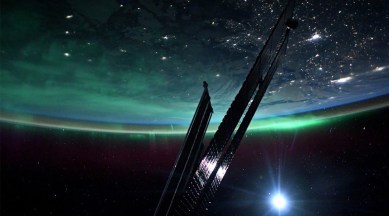NASA astronaut captures stunning image of auroras from space, calls it ‘absolutely unreal’
NASA astronaut Josh Cassada, who is currently aboard the International Space Station, shared a picture of the northern lights, proving how it might look better when seen from space.

When charged particles like electrons and protons collide with gases in Earth’s upper atmosphere, they produce tiny flashes that fill the sky with one of the most beautiful natural phenomena that can be seen on Earth—auroras. But NASA astronaut Josh Cassada shared a picture proving that auroras may actually look better when you are orbiting 250 kilometres above the planet.
Cassada is currently on the International Space Station and shared this image of the northern lights on Twitter, describing it with just two words; “Absolutely unreal.” In the image, you can not only see the aurora, but you can also catch a glimpse of city lights on Earth and solar arrays that are part of the space station.
As we already know, auroras are caused by the collision of charged particles with the upper reaches of the Earth’s atmosphere. But the Earth’s magnetic field steers these charged particles mostly towards the poles of the planet. The shape of the magnetic field means that “aurora ovals: form above the planet’s North and South Magnetic Poles.
Since most people are not fortunate to view the aurora from the space station, the best way to catch a glimpse of this stunning natural phenomenon would be to visit places in the far north of the world, like Greenland, Norway, Sweden, Finland and other places. On the other side of the planet, auroras are best viewed from locations like Tasmania in Australia and New Zealand.
But according to The Weather Network, the solar activity that causes these auroras has been ramping up in recent days. A “coronal mass ejection,” or a kind of solar explosion, happened on Friday, February 24. This combined with a fast-flowing solar wind to spur a geomagnetic storm.
Due to this, auroras were visible in locations where they wouldn’t have been otherwise, like in the United Kingdom, as per a report by The Guardian. Interestingly, according to a BBC report, a pilot flying a commercial plane from Iceland to Manchester made a 360-degree turn to treat passengers to a view of the stunning northern lights as it lit up the skies of the country in a rare event.